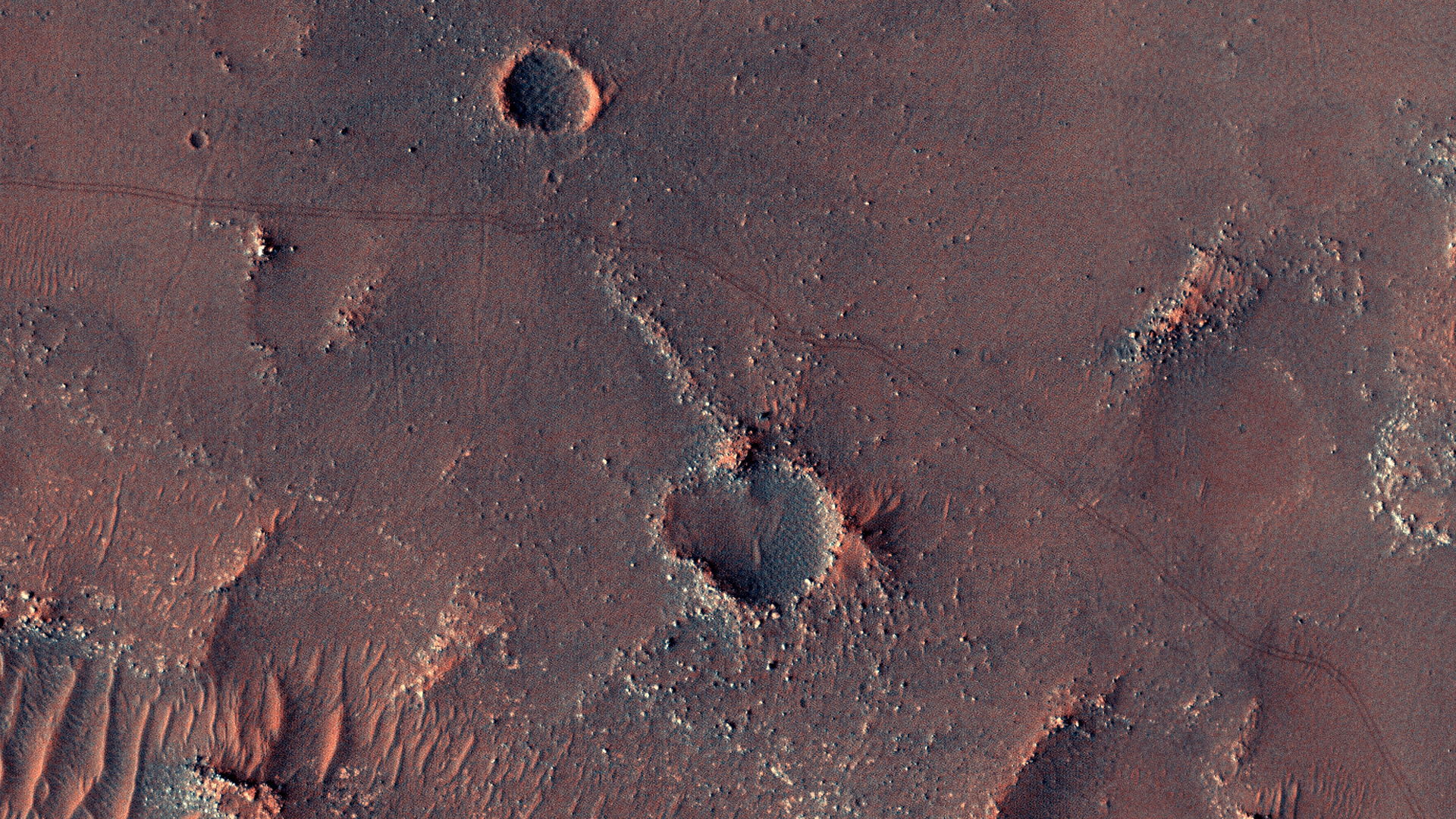NASA's HiRISE camera captures tracks left by Perseverance Mars rover

This picture from NASA's High-Resolution Imaging Science Experiment (HiRISE), a powerful camera onboard the Mars Reconnaissance Orbiter (MRO), showcases the tracks left by the agency's Perseverance Mars rover during its westward traverse in Jezero Crater - the landing site of the rover.
The HiRISE image cutout spans less than 1 km (under a mile) in width, offering intricate details of the terrain and the intricate tracks left by the Perseverance rover. The image was taken when the Mars Reconssiance Orbiter was flying at an altitude of 279 km (173 mi), showcasing the immense capabilities of HiRISE to capture high-resolution imagery from its vantage point.
The primary objective behind this observation was to enhance the color coverage of the Perseverance rover's path, providing scientists and researchers with a comprehensive view of the region. By analyzing the color variations, scientists can gain valuable information about the composition and geological features of the area explored by the rover.
Jezero Crater is of significant scientific interest because the area is believed to have once flooded with water and was home to an ancient river delta, making it an intriguing site to investigate for potential signs of ancient microbial life. The rover's westward journey has allowed it to explore new areas and unlock more secrets of Mars' intriguing geological history.
HiRISE 4K: Tracking PercyThis 2022 image shows some of the tracks left by the Perseverance rover as it traveled to the west of this location in Jezero Crater. Full cutout on Flickr: https://t.co/ADhGd5IZOHNASA/JPL-Caltech/Arizona#Mars #science #space #astronomy pic.twitter.com/AjlOQRUi1V
— HiRISE: Beautiful Mars (NASA) (@HiRISE) June 14, 2023
Operated by the University of Arizona, HiRISE is one of the most advanced instruments ever sent to Mars. Its high-resolution capabilities enable scientists to study Martian features with unprecedented clarity and aid in the ongoing exploration and understanding of the Red Planet.
The main objectives of NASA's Perseverance mission, launched in July 2020, include searching for signs of ancient life, collecting and caching samples for potential return to Earth, and testing technologies to support future missions.










